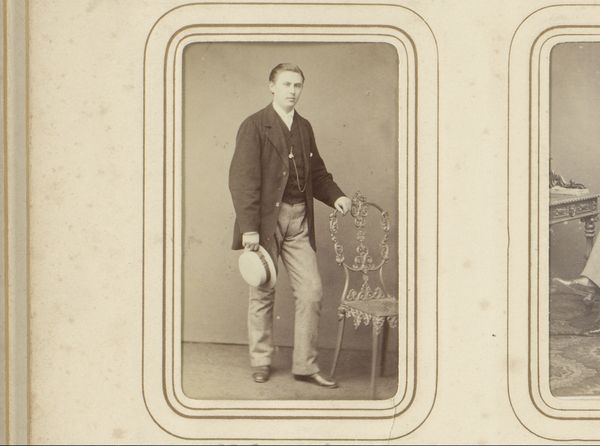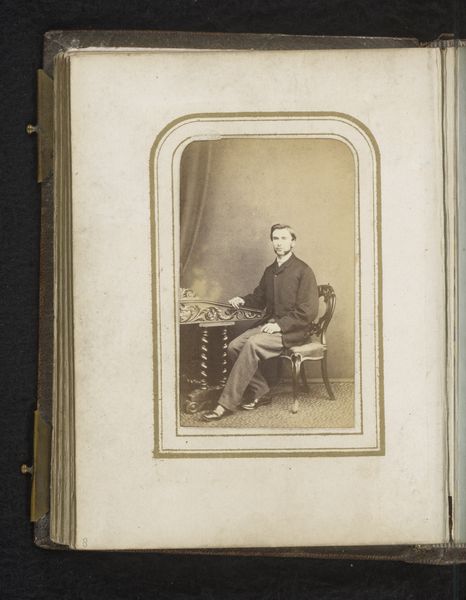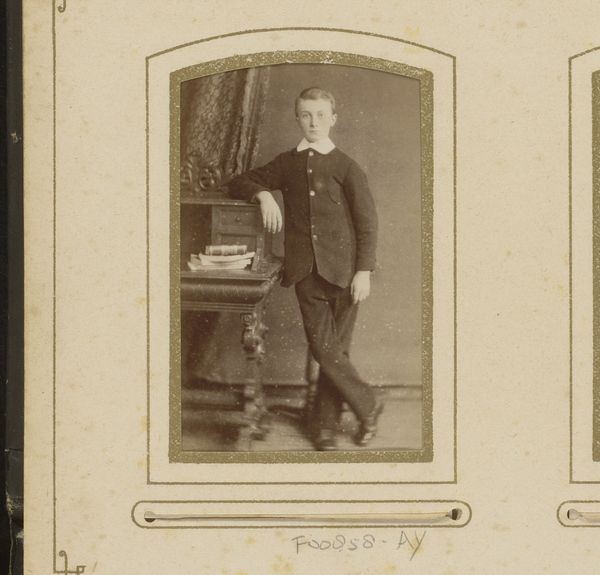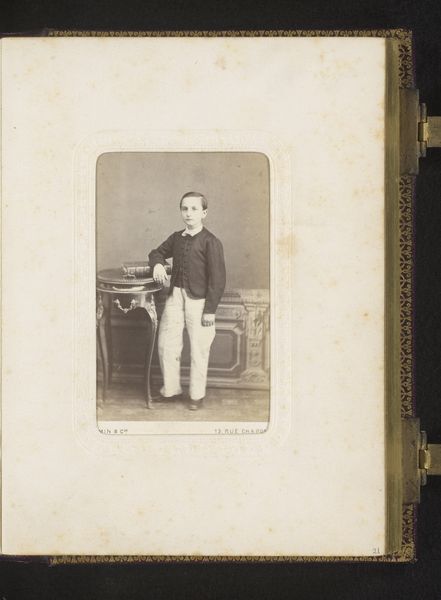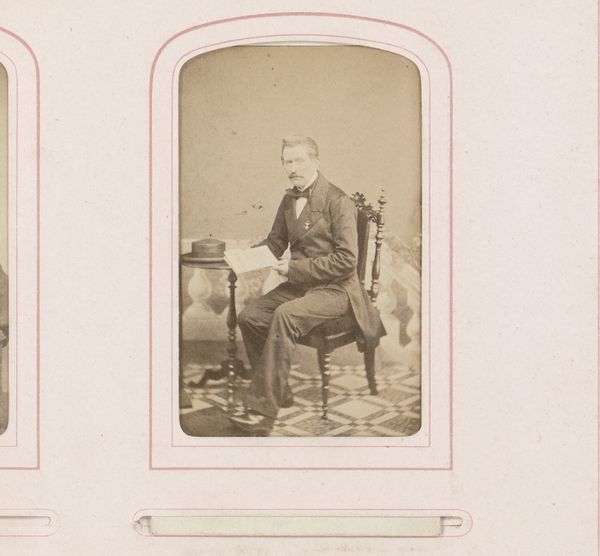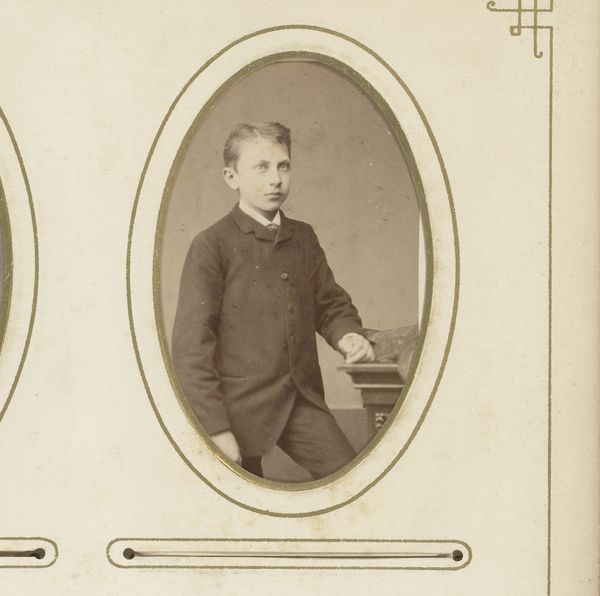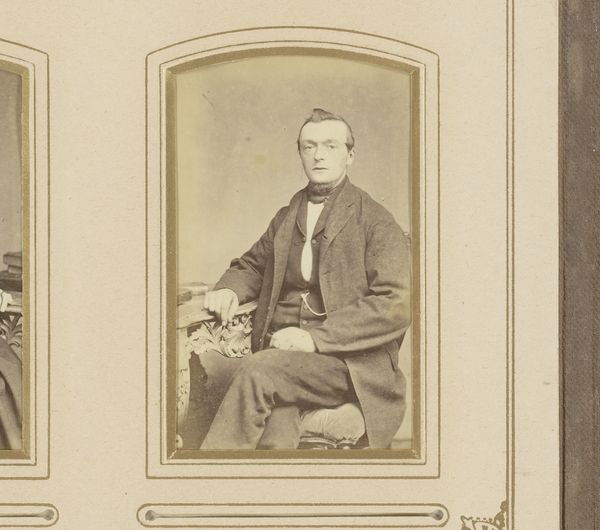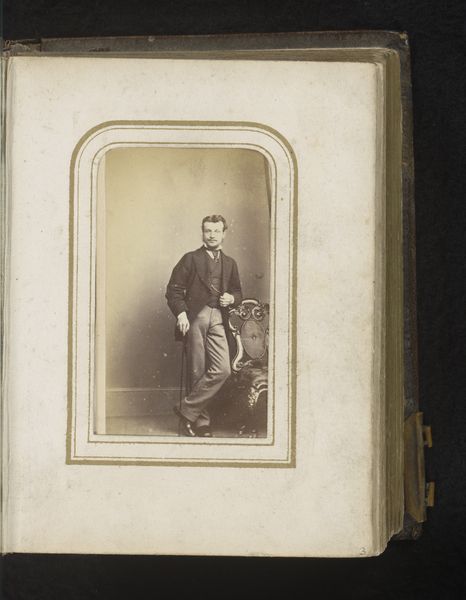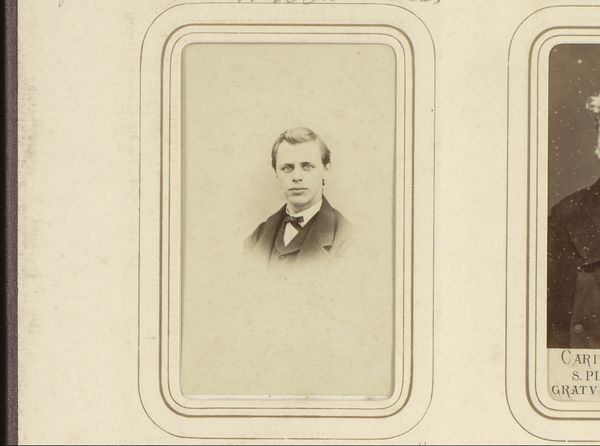
photography, gelatin-silver-print
#
portrait
#
photography
#
historical photography
#
gelatin-silver-print
#
19th century
#
academic-art
#
realism
Dimensions: height 82 mm, width 50 mm
Copyright: Rijks Museum: Open Domain
Curator: This is a photograph titled "Portret van een zittende man," a gelatin-silver print created sometime between 1850 and 1896 and currently held here at the Rijksmuseum. It is attributed to Kasparus Karsen. Editor: There’s an austerity to it. The limited tonal range, that rigid posture...it conveys a sense of constrained masculinity that’s so characteristic of the 19th century. Curator: Precisely. Early portrait photography often mirrors the conventions of painting in terms of composition and subject matter, adopting realistic features for representing important individuals with all of their garments, jewelry, status, etc. Think about it this way—this sitter’s formality is visually communicating something important about societal structure during the Industrial Revolution. Editor: I agree. The controlled gaze and formal attire really underscore the social expectations placed upon men of that era, this idea of the bourgeois man having respectability as his north star. The somewhat washed-out aesthetic adds to this feeling of being trapped within a particular moment in time, a certain historical milieu that valued rationality and control above all else. You know, portraits always tell us just as much about a society’s expectations as the person being pictured. Curator: A fascinating insight. We have become accustomed to snapshots—to candid images—and what has been valued more in photographic portraits of recent decades. However, the stiffness of 19th-century photography often was tied to technological limitations. Lengthy exposure times forced sitters into stillness and the fact that photographs could only reproduce reality contributed to their unique artistic goals. It can appear melancholic to contemporary eyes, perhaps. Editor: I suppose so. And it raises questions of agency and representation—who has the power to fix an image, to control the narrative? Here, we see how a developing technology intertwines with prevailing social norms to construct an image of power. A good reminder to always unpack who is doing the looking. Curator: True, always more layers than one could assume. Well, that gives us something to keep in mind. Editor: Absolutely. The personal *is* political, as ever.
Comments
No comments
Be the first to comment and join the conversation on the ultimate creative platform.
